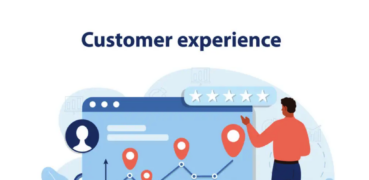Feature-Led Growth: Unlocking Product Success by Focusing on the Right Features

In today’s competitive landscape, building a great product isn’t just about having unique features; it’s about knowing which features matter most to your users and using them as the engine for growth. This approach is known as Feature-Led Growth (FLG), where prioritizing and refining high-impact features becomes the primary strategy for driving user engagement, satisfaction, and, ultimately, revenue growth.
Let’s dive into the fundamentals of Feature-Led Growth, why it matters, and how to implement it effectively.
What is Feature-Led Growth?
Feature-Led Growth (FLG) is a strategy that focuses on identifying, developing, and promoting product features that create the most value for users. Rather than trying to address every possible user need or adding features without a clear purpose, FLG zeros in on key features that can make or break the user experience. These high-impact features become the main drivers of user acquisition, retention, and expansion.
In a Feature-Led Growth approach, the product team prioritizes features based on data insights, customer feedback, and alignment with user needs, creating a clear and intentional product roadmap. The aim is to continuously enhance these core features to maximize their impact and contribute directly to growth.
Why Feature-Led Growth Matters
Feature-Led Growth is especially effective for modern SaaS companies or any business with a digital product, where user experience and product engagement are critical for long-term success. Here’s why FLG is gaining traction:
- Maximizes Product Value
By focusing on the features that matter most, companies can ensure they’re consistently delivering value to their users, increasing satisfaction and loyalty. - Drives User Adoption
When key features are designed to address core user needs, users are more likely to adopt and use the product frequently, improving overall engagement. - Informs the Product Roadmap
FLG provides a data-driven approach to product development, guiding teams to invest resources into features that drive results rather than speculative or underutilized ones. - Reduces Development Costs
With a focused approach, product teams can avoid building low-impact features, reducing development time, resource allocation, and maintenance costs. - Boosts Revenue Growth
By enhancing and promoting high-value features, companies can increase conversion rates, reduce churn, and even create upsell opportunities, all of which contribute directly to revenue.
Implementing a Feature-Led Growth Strategy
Step 1: Identify High-Impact Features
Not all features contribute equally to growth. Begin by analyzing product usage data to identify which features are used most frequently and contribute directly to user satisfaction and engagement. Key methods to identify these high-impact features include:
- Usage Analytics: Review data on feature adoption and engagement to see which features users rely on the most.
- User Feedback: Collect qualitative feedback from users through surveys, interviews, and support tickets to understand which features are most valued.
- Customer Journey Mapping: Map out the customer journey to identify pain points and moments where specific features drive user value.
Step 2: Set Goals and Define Metrics
Once you’ve identified the core features, set specific goals for each, such as increasing feature adoption or enhancing user engagement. Establish key metrics that will help track progress, such as:
- Adoption Rate: The percentage of users actively using a particular feature.
- Engagement Rate: Frequency of usage or time spent on the feature.
- Retention and Churn Metrics: How usage of a specific feature impacts user retention and churn rates.
Step 3: Continuously Improve Key Features
To keep high-impact features relevant and valuable, gather user insights and regularly test improvements. Some tactics include:
- A/B Testing: Experiment with changes to the feature’s design, functionality, or UI to see what resonates most with users.
- User Onboarding: If a high-impact feature has low adoption, create guided onboarding flows or tutorials to introduce users to its benefits.
- Feature Refinement: Continuously refine the feature based on feedback, user behavior data, and best practices, ensuring it stays relevant and useful.
Step 4: Promote Core Features in Marketing
In a Feature-Led Growth strategy, marketing plays a critical role by highlighting key features that drive growth. Some ways to promote these features effectively include:
- In-Product Messaging: Use pop-ups, tooltips, or banners within the product to highlight new or improved features and encourage usage.
- Educational Content: Create blog posts, webinars, or tutorials that showcase the feature’s benefits and demonstrate its value.
- Case Studies and Success Stories: Share user success stories that showcase how the feature has solved real-world problems or delivered measurable results.
Step 5: Measure and Iterate
Track the impact of your efforts to promote and enhance high-impact features. Use the metrics defined in Step 2 to assess performance and adjust your strategy based on what’s working. For example, if adoption of a feature remains low despite promotion, consider making usability improvements or simplifying onboarding.
Examples of Feature-Led Growth in Action
Many successful companies have leveraged Feature-Led Growth to drive growth and user satisfaction. Here are a few examples:
- Slack
Slack’s “Channels” feature is at the core of its functionality, allowing users to organize conversations and collaborate more effectively. By focusing on improving and promoting Channels, Slack enhances team collaboration, leading to higher user retention and engagement. - Zoom
Zoom’s “One-Click Join” feature makes it incredibly easy for users to join meetings without complex setup. This simplicity and focus on convenience is a high-impact feature that sets Zoom apart, driving user acquisition and retention. - Spotify
Spotify’s “Discover Weekly” playlist is a popular feature that keeps users engaged by offering personalized music recommendations. By continuously improving and promoting Discover Weekly, Spotify has increased its user engagement and subscription rates. - Notion
Notion’s flexibility with “Database” and “Template” features empowers users to customize their experience, making it versatile for different use cases. By focusing on these features, Notion has built a loyal user base that values the product’s adaptability.
Feature-Led Growth Best Practices
To get the most out of Feature-Led Growth, keep these best practices in mind:
- Align Features with User Needs
Focus on understanding your users’ needs and pain points to ensure that each high-impact feature aligns with what they value most. - Prioritize Simplicity and Usability
Complex features can discourage usage. Aim to keep key features easy to find, intuitive to use, and seamlessly integrated into the user experience. - Leverage Data and User Feedback
Use data analytics to track feature usage and gather feedback to understand user satisfaction and areas for improvement. - Focus on Continuous Improvement
Feature-Led Growth is an ongoing process. Regularly refine and update your key features based on usage patterns, user feedback, and market trends. - Educate and Guide Users
Invest in education and guidance to help users discover the full potential of high-impact features, whether through onboarding, tutorials, or in-product messaging.
Feature-Led Growth vs. Product-Led Growth
It’s essential to distinguish Feature-Led Growth from Product-Led Growth (PLG), another popular growth strategy. While PLG focuses on using the product itself as the primary driver for acquisition, retention, and expansion, FLG narrows the focus to specific features within the product. In a sense, FLG can be seen as a subset of PLG, where certain high-impact features are identified as the main drivers of growth. Both strategies are valuable, but FLG provides a more targeted approach, focusing on perfecting and promoting specific features that deliver the highest value to users.
Conclusion: Why Feature-Led Growth is Key to Product Success
Feature-Led Growth is a powerful approach for any organization looking to maximize the impact of its product’s core capabilities. By focusing on high-impact features and continuously refining and promoting them, businesses can drive engagement, retain users, and unlock growth.
In a world where users have countless product options, an FLG strategy provides a way to differentiate your product and ensure it remains relevant. When executed well, FLG helps organizations create a product that not only meets users’ needs but also delivers unique value, setting the stage for long-term growth and success.







